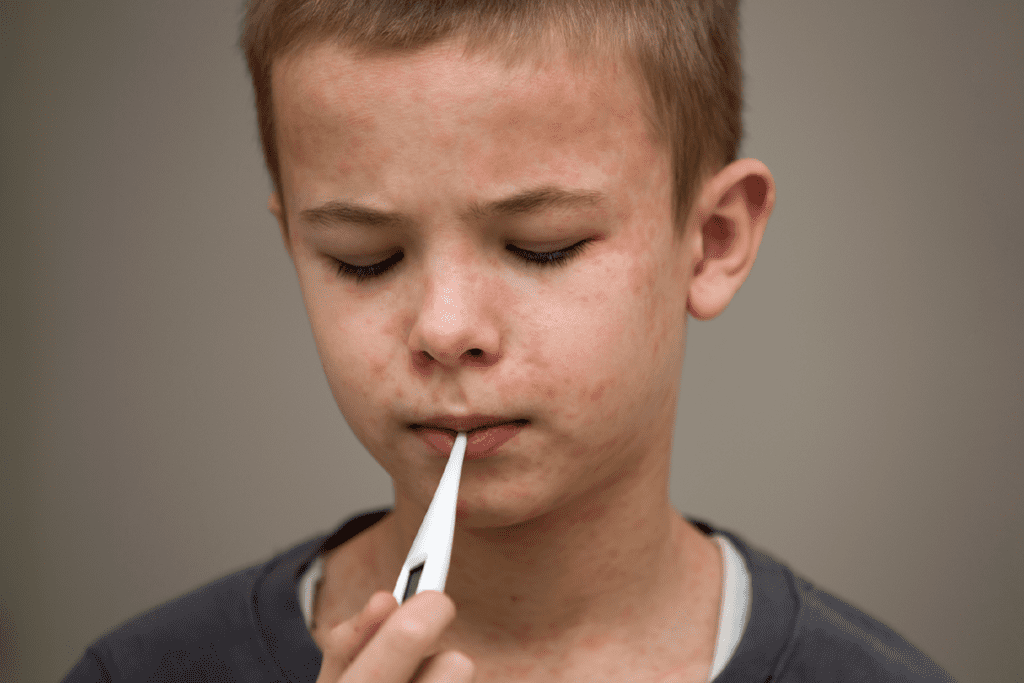
After being eliminated in 2000, measles is back. Closing gaps in measles vaccine coverage is key to increasing herd immunity and preventing outbreaks.
As we rang in the new year, Philadelphia health authorities shared somber news as they announced an outbreak of measles in the city. This outbreak is the latest in a resurgence in measles cases across the globe. What makes this situation unfortunate is that we have long had an effective vaccine against measles.
Before the vaccine was introduced in the 1960s, there were an estimated 3 to 4 million cases a year in the United States that led to between 400 to 500 deaths each year. However, the vaccine was so effective that the Centers for Disease Control and Prevention (CDC) reported measles as being eliminated in 2000.
So what exactly is behind these rising numbers of measles outbreaks?
Measles, also called Rubeola in medical parlance, is caused by an extremely transmissible virus. An astonishing 90 percent of those exposed to a single patient with measles will go on to develop measles themselves if not vaccinated against it. Spread occurs through respiratory droplets that can contaminate surfaces. These droplets also linger in the air for up to two hours after being coughed up by a patient.
Symptoms appear within 7 to 14 days after exposure and include a high fever, cough, runny nose, and red eyes. These physical signs can resemble other childhood viral infections. Two to three days after these symptoms, tiny spots (Koplik’s spots) appear in the mouth, followed by a skin rash. The rash appears as small raised bumps that eventually join together as it spreads.
Concerning complications from measles
What makes measles so concerning is the risk for complications. Around one in ten children with measles develop ear infections and a slightly lower proportion develop diarrhea. But the most serious complications are pneumonia and inflammation of the brain (encephalitis). As many as one in twenty children develop pneumonia and about one in 1,000 develop encephalitis. The latter can cause permanent deafness and intellectual disabilities. One to three out of 1,000 children infected with measles die from pneumonia or encephalitis.
Also, pregnant women who are not immunized can give birth prematurely or have low birth weight babies. An even rarer longterm fatal complication is subacute sclerosing panencephalitis (SSPE). This complication can present 7 to 10 years after the infection has apparently resolved.
No vaccine link to autism
The measles vaccine is delivered in two doses in childhood and as noted earlier, is very effective at preventing infection. Unfortunately, the vaccine was wrongly implicated as causing autism and that provoked significant vaccine hesitancy. The association with autism has since been shown to be false; nonetheless, the damage to its reputation led to a breach in herd immunity, which allowed for measles to return.
Consequently, cases of measles in the United States rose steadily until reaching a peak of 1274 cases in 2019. While they did come down with the COVID-19 pandemic, that period also resulted in a global gap in measles vaccine coverage. That’s because more parents were unable to vaccinate their children due to pandemic-related disruptions. Herd immunity is particularly important in environments like child daycares and schools where some children may not be adequately vaccinated.
So as we start the new year, take a moment to find out if you and your loved ones are immune to measles and take the next step in plugging that gap. Each gap closed counts and helps prevents measles outbreaks!
Schedule a Primary.Health vaccination clinic
Primary.Health powers healthcare outside the clinic with easy, accessible vaccinations and testing at scale, plus all the data and reporting your community or public health organization needs for decision-making.
Disclaimer: This blog content and linked materials are not intended as individual medical advice, diagnosis or treatment, and should not be considered as such. Any readers with medical concerns should contact a licensed healthcare provider. This blog is provided for informational purposes only.
